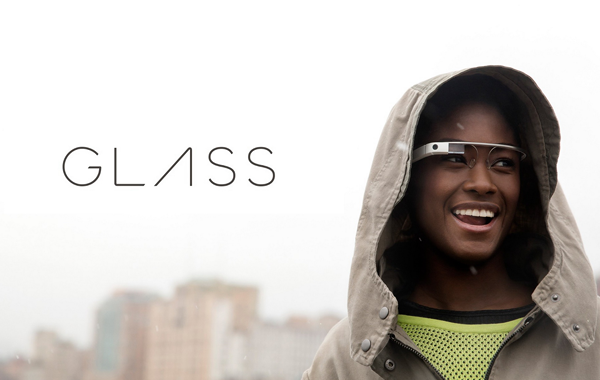Finally, James Bond gear.
Yeah, we can all be good-guy spies fighting terrorists or exposing the other nation’s spy ring in America. Or Britain if you fancy serving the Queen like the original James Bond. Anyway, whatever your reasons are for getting excited, you should try theeye glasses that function like mini-computers, and the smart watches thatimmerse you in the gaming experience.
Manufacturers are finally going into the realm of our dreams and creating the gear we only see in movies used by our favorite characters. But then, for every dream scenario, there’s a nightmare waiting to happen. A disaster in the works that will undermine the whole concept itself. This is one of the problems currently faced by the first generation of wearable tech devices.It’s still anyone’s game since most people are still sceptical as to the real advantages of the aforementioned devices.
Let’s discuss the two most prominent devices: Google Glass and Smart Watches.
Google Glass

Awe would probably be an understatement to describe the collective reaction of the world when Google first unveiled Glass. It’s a device that previously existed only in the deepest regions of our imagination. A device that seems to be more revolutionary than the cellphone itself.A device that pushed the limits of consumer electronics engineering.
With the release of Google Glass to the select few beta-testers, these soaring thoughts did not crash but the implications and limitations of the device surfaced almost immediately. First, there are privacy concerns. I mean, wink to take a picture, ten-second clips that can be stored on its 16 GB internal storage, search the web using the touchpad at the sides….these are recipes for a worldwide paranoia and a massive PR disaster for Google.
However, once the dust settled, these hurdles were overcome with the advantages of Glass. It can be used, theoretically, for a remote consultation between a doctor and his patient, assistance with surgery, and other healthcare and educational situations.
To combat the unethical use of Glass and to eliminate potential “Glassholes,” states are implementing regulations with regards to its usage. Casinos in Las Vegas, for once, forbid the use of Glass inside their establishments. Driving while using Glass is explicitly forbidden in the United States and the United Kingdom due to safety concerns just like the texting while driving.
Google has also announced the development of a Glass Play store where applications specifically designed for it can be posted and made available to users. There are also rumors of a second generation Glass that will fix the bugs and put certain software limits as to nip in the bud future unethical usage.
Smart Watches
![samsung-galaxy-gear-watch4[1]](http://inspirationfeeed.files.wordpress.com/2013/09/samsung-galaxy-gear-watch41.jpg)
Considering that the very first smart watch was released in 1972, smart watches are older than mobile phones themselves. While the first smart watch, the Pulsar made by the Hamilton Watch Company, can hardly be considered “smart” especially when compared to smart watches today, it is a precursor to the smart watches that would be released by Seiko in the following years after it acquired the Pulsar brand. Having failed to gain traction, smart watches faded into the background, being used only by hobbyists or wealthy techies.
Fast-forward four decades and smart watches are once again the rage. Sony was the first to introduce a smart watch among the major phone manufacturers. Then Samsung (Galaxy Gear) and Qualcomm (Toq) also followed suit and released their own smart watches. Other manufacturers’ smart watches are still being developed but it is safe to say that almost all of them are currently engaged in smart watch research and development. Apple is also rumoured to have their own smart watch, the iWatch, in development.
What could have kick-started the smart watch mania? There are a number of reasons such as the surge in popularity of Sony-made smart watches, the sudden interest of manufacturers to have a smartphone-smart watch pair and of course, the rumors of an Apple smart watch.
Anyway, the sudden interest in smart watches and the willingness of manufacturers to ride the craze only magnifies the present concerns of users and the limitations of smart watches themselves.
Besides, if they are functioning almost like smartphones (in the case of the Samsung Galaxy Gear), why are they even called smart watches? Is it because they are attached to our wrists? What of battery life, durability and other customizations? Why are the watches even needed?
Unless smart watches strike a delicate balance between functionality and usability, these devices will remain niche products bought only by well-off geeks or rich kids playing geek.
A New Viewpoint
Maybe we’re still not ready for wearable tech, or rather we have such high expectations for them that using them has become cumbersome, the idea behind them lost to the torrent of half-baked features and usability issues plaguing new devices.
Considering that new gadgets cost an arm and a leg, you might want to sell your old iPhone or smartphone on eCycleBest.com to pad your budget. The Galaxy Gear apparently costs $300 while Google sold the Glass to 10,000 beta-testers initially for a cool $1,500.
The technology behind them and the idea is nice, though, I still think that we should wait for manufacturers to change some of the security loopholes and usability issues plaguing some of these wearable tech devices today. Once those issues are fixed, then we may finally fully utilize the tech equipment of James Bond as our own.
Wearable tech devices that are as crazy as the idea behind James Bond’s unrealistic patriotism, the immense trove of futuristic gadgets, and the smoking hot leading ladies. This time,though, the idea is as real as it is crazy.
The same crazy idea that precipitates great inventions. And classic action and sci-fi films J